Asuntos Tradicionalistas
 |
 |
 |
 |
 |
 |
 |
Misa Dialogada - CLII
Dom Prosper Guéranger
Testigo en Contra del Movimiento Litúrgico
En 1975, en el aniversario de la muerte de Dom Prosper Guéranger, OSB (1805-1875), Abad de Solesmes, Pablo VI lo designó como el “Autor del Movimiento Litúrgico.” 1 Esta afirmación, como muchos otros eslóganes de la época del Vaticano II, ha sido repetida con tanta frecuencia por los devotos del Movimiento Litúrgico que ahora la dan por sentada como indudablemente cierta.
Sin embargo, se demostrará que no se basa en ningún dato verificable y que puede ser descartada como parte del universo de “noticias falsas” en el que habitan hoy los católicos apegados a las reformas conciliares.
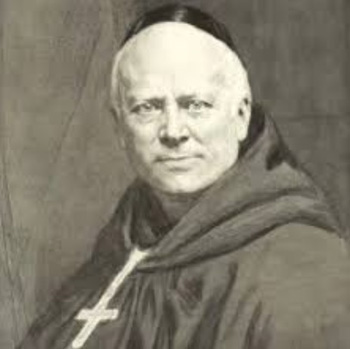 El propósito de esta afirmación era evidentemente dar un aire de respetabilidad al Movimiento Litúrgico vinculándolo con la reputación de Dom Guéranger, quien fue conocido por el notable éxito de su renovación litúrgica en Francia tras la Revolución Francesa, la cual había reducido el monacato a ruinas.
El propósito de esta afirmación era evidentemente dar un aire de respetabilidad al Movimiento Litúrgico vinculándolo con la reputación de Dom Guéranger, quien fue conocido por el notable éxito de su renovación litúrgica en Francia tras la Revolución Francesa, la cual había reducido el monacato a ruinas.
Una pregunta pertinente a considerar es cuánta fiabilidad se puede otorgar a una valoración de los logros de Guéranger realizada por miembros del Establecimiento Litúrgico posterior al Vaticano II, en una era que ha sido descrita como la Revolución Francesa en la Iglesia Católica y que ha sido testigo de un abandono generalizado de la vida monástica.
Después de todo, ellos estaban imbuidos de los principios de 1789 – Libertad, Igualdad y Fraternidad – que Guéranger rechazaba. Él era un ultramontano, es decir, un firme defensor de la supremacía papal y del control centralizado de la Iglesia desde Roma, mientras que ellos abrazaban la colegialidad. Con puntos de vista tan diametralmente opuestos, es poco probable que existiera una concordancia de sentimientos entre los dos mundos diferentes de las posiciones previas y posteriores al Vaticano II sobre el monacato, la liturgia o, en realidad, sobre cualquier otro aspecto de la vida eclesiástica.
The first requirement in assessing Guéranger’s work as a Benedictine monk is to place his contribution to the good of the Church in its historical context.
Contraste entre Dom Guéranger y los reformadores posteriores
Si tomamos los principios principales en los que se basó la reforma litúrgica de Dom Guéranger, surgirán varios puntos de divergencia que ponen de manifiesto la incompatibilidad fundamental entre el espíritu de renovación que animaba a Guéranger y el espíritu de reforma que impulsaba la agenda de los liturgistas previos al Vaticano II. Por conveniencia, los principios a los que Guéranger se adhirió pueden agruparse bajo cuatro encabezados:
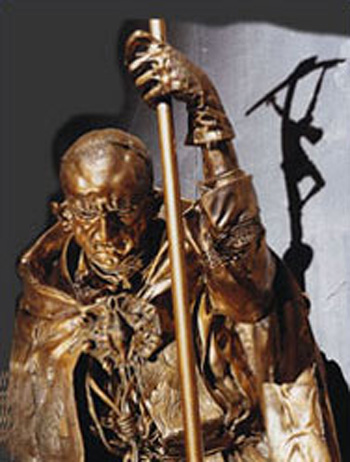
La historia del Movimiento Litúrgico actual está salpicada de experimentos por parte de reformadores que introdujeron novedades de su propia invención en la liturgia. Los primeros años del siglo vieron la práctica creciente de la “participación activa”, la “Misa dialogada” y la Misa de cara al pueblo. Incluso hubo cierto experimento ecuménico, por ejemplo, las iniciativas de Dom Beauduin de intercambio interconfesional en el monasterio de Amay, que fundó en 1925.
Desde mediados de siglo hasta el Vaticano II, a los reformadores litúrgicos se les permitió, con apoyo papal, eliminar elementos significativos del Misal Romano, particularmente en los oficios de Semana Santa, que consideraban inadecuados para los gustos modernos. El Papa Juan XXIII, continuando la política de su predecesor, suprimió muchas fiestas del Calendario General, lo que también afectó al Breviario.
Él eliminó el Confiteor antes de la Comunión en el Ordinario de la Misa y alteró el inmutable Canon con la adición del nombre de San José. Así, para el momento de la Constitución sobre la Liturgia en 1963, si el vínculo con la Tradición no estaba completamente roto, al menos estaba peligrosamente desgastado.
En cuanto a la cuestión de la erudición litúrgica, el propio Guéranger fue un practicante ejemplar en este ámbito. Tenía todas las cualidades esenciales para la tarea: piedad, erudición, celo por la verdad y un sincero deseo de servir a la Iglesia preservando sus tradiciones. Muy distinta era la situación con los reformadores litúrgicos previos al Vaticano II.
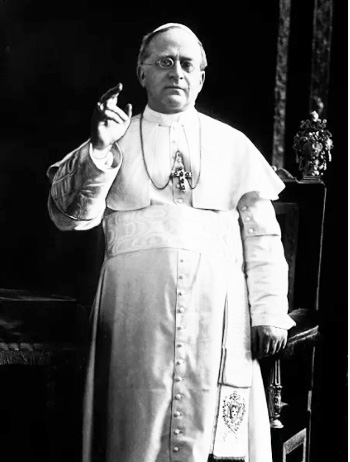 Una investigación minuciosa sobre sus métodos de estudio demostrará que su objetivo no era proporcionar la verdad y ampliar el conocimiento, sino más bien publicitar únicamente aquellos hallazgos que respaldaban sus nociones preconcebidas de reforma litúrgica, mientras ignoraban las evidencias contrarias.
Una investigación minuciosa sobre sus métodos de estudio demostrará que su objetivo no era proporcionar la verdad y ampliar el conocimiento, sino más bien publicitar únicamente aquellos hallazgos que respaldaban sus nociones preconcebidas de reforma litúrgica, mientras ignoraban las evidencias contrarias.
Una comparación con la obra de Guéranger (quien logró la unidad dentro del rito romano en estricta fidelidad al Concilio de Trento) revelará que los progresistas del siglo XX tenían una concepción totalmente distinta de la renovación litúrgica. Para ellos, el estudio basado en la investigación era simplemente una estrategia para impulsar cambios de política en el más alto nivel de la Jerarquía de la Iglesia. En esto tuvieron un éxito notable, como lo atestigua la historia de la liturgia del Novus Ordo.
En 1924, el Papa Pío XI había criticado el “espíritu orgulloso y engreído” de ciertos eruditos reformistas que carecían de las disposiciones correctas para la investigación académica en asuntos litúrgicos:
“Sin embargo, estos estudios de los ritos antiguos deben ir precedidos de la preparación necesaria para el conocimiento y deben ir acompañados de piedad y de una obediencia dócil y humilde. Y si estas faltan, cualquier investigación sobre las liturgias antiguas de la Misa resultará impía e infructuosa: porque cuando se ha despreciado la suprema autoridad de la Sede Apostólica en materia litúrgica —que con razón rechaza la erudición engreída y, con el Apóstol, ‘habla sabiduría entre los perfectos’ (1 Cor. 8: 1,2: 6)—, ya sea por ignorancia o por un espíritu orgulloso y engreído, amenaza inmediatamente el peligro de que el error conocido como Modernismo sea introducido también en asuntos litúrgicos.” 2
El Movimiento Litúrgico impregnado de Modernismo
Irónicamente, un Modernismo resurgente ya avanzaba de manera constante durante el pontificado de Pío XI, y había ganado tal terreno en la época de Pío XII que incluso un teólogo protestante, alentando desde la barrera el progreso del Movimiento Litúrgico, observó en 1954:
“Es especialmente en su método teológico que el Movimiento Litúrgico evidencia una relación con los errores del Modernismo condenados por Pío X en Pascendi… algunas de las tendencias más fructíferas condenadas por Pío X en su condena general han servido para hacer del Movimiento Litúrgico la gran potencia que es hoy.” 3
Continuará ...

Sin embargo, se demostrará que no se basa en ningún dato verificable y que puede ser descartada como parte del universo de “noticias falsas” en el que habitan hoy los católicos apegados a las reformas conciliares.

Dom Guéranger, un ultramontano fiel
a la Tradición de la Iglesia
Una pregunta pertinente a considerar es cuánta fiabilidad se puede otorgar a una valoración de los logros de Guéranger realizada por miembros del Establecimiento Litúrgico posterior al Vaticano II, en una era que ha sido descrita como la Revolución Francesa en la Iglesia Católica y que ha sido testigo de un abandono generalizado de la vida monástica.
Después de todo, ellos estaban imbuidos de los principios de 1789 – Libertad, Igualdad y Fraternidad – que Guéranger rechazaba. Él era un ultramontano, es decir, un firme defensor de la supremacía papal y del control centralizado de la Iglesia desde Roma, mientras que ellos abrazaban la colegialidad. Con puntos de vista tan diametralmente opuestos, es poco probable que existiera una concordancia de sentimientos entre los dos mundos diferentes de las posiciones previas y posteriores al Vaticano II sobre el monacato, la liturgia o, en realidad, sobre cualquier otro aspecto de la vida eclesiástica.
The first requirement in assessing Guéranger’s work as a Benedictine monk is to place his contribution to the good of the Church in its historical context.
Contraste entre Dom Guéranger y los reformadores posteriores
Si tomamos los principios principales en los que se basó la reforma litúrgica de Dom Guéranger, surgirán varios puntos de divergencia que ponen de manifiesto la incompatibilidad fundamental entre el espíritu de renovación que animaba a Guéranger y el espíritu de reforma que impulsaba la agenda de los liturgistas previos al Vaticano II. Por conveniencia, los principios a los que Guéranger se adhirió pueden agruparse bajo cuatro encabezados:

Pablo VI afirmó de manera deshonesta que Dom Guéranger fue el fundador de las reformas litúrgicas progresistas
- La reforma litúrgica debe mantener un vínculo ininterrumpido con la Tradición;
- No debe introducir novedades ni adaptaciones a costumbres locales;
- No debe permitir que se elimine ninguna parte de la liturgia;
- Debe ser emprendida por personas destacadas por su piedad más que solo por su erudición.
La historia del Movimiento Litúrgico actual está salpicada de experimentos por parte de reformadores que introdujeron novedades de su propia invención en la liturgia. Los primeros años del siglo vieron la práctica creciente de la “participación activa”, la “Misa dialogada” y la Misa de cara al pueblo. Incluso hubo cierto experimento ecuménico, por ejemplo, las iniciativas de Dom Beauduin de intercambio interconfesional en el monasterio de Amay, que fundó en 1925.
Desde mediados de siglo hasta el Vaticano II, a los reformadores litúrgicos se les permitió, con apoyo papal, eliminar elementos significativos del Misal Romano, particularmente en los oficios de Semana Santa, que consideraban inadecuados para los gustos modernos. El Papa Juan XXIII, continuando la política de su predecesor, suprimió muchas fiestas del Calendario General, lo que también afectó al Breviario.
Él eliminó el Confiteor antes de la Comunión en el Ordinario de la Misa y alteró el inmutable Canon con la adición del nombre de San José. Así, para el momento de la Constitución sobre la Liturgia en 1963, si el vínculo con la Tradición no estaba completamente roto, al menos estaba peligrosamente desgastado.
En cuanto a la cuestión de la erudición litúrgica, el propio Guéranger fue un practicante ejemplar en este ámbito. Tenía todas las cualidades esenciales para la tarea: piedad, erudición, celo por la verdad y un sincero deseo de servir a la Iglesia preservando sus tradiciones. Muy distinta era la situación con los reformadores litúrgicos previos al Vaticano II.

Pío XI acusó a los modernistas de carecer de piedad y erudición
Una comparación con la obra de Guéranger (quien logró la unidad dentro del rito romano en estricta fidelidad al Concilio de Trento) revelará que los progresistas del siglo XX tenían una concepción totalmente distinta de la renovación litúrgica. Para ellos, el estudio basado en la investigación era simplemente una estrategia para impulsar cambios de política en el más alto nivel de la Jerarquía de la Iglesia. En esto tuvieron un éxito notable, como lo atestigua la historia de la liturgia del Novus Ordo.
En 1924, el Papa Pío XI había criticado el “espíritu orgulloso y engreído” de ciertos eruditos reformistas que carecían de las disposiciones correctas para la investigación académica en asuntos litúrgicos:
“Sin embargo, estos estudios de los ritos antiguos deben ir precedidos de la preparación necesaria para el conocimiento y deben ir acompañados de piedad y de una obediencia dócil y humilde. Y si estas faltan, cualquier investigación sobre las liturgias antiguas de la Misa resultará impía e infructuosa: porque cuando se ha despreciado la suprema autoridad de la Sede Apostólica en materia litúrgica —que con razón rechaza la erudición engreída y, con el Apóstol, ‘habla sabiduría entre los perfectos’ (1 Cor. 8: 1,2: 6)—, ya sea por ignorancia o por un espíritu orgulloso y engreído, amenaza inmediatamente el peligro de que el error conocido como Modernismo sea introducido también en asuntos litúrgicos.” 2
El Movimiento Litúrgico impregnado de Modernismo
Irónicamente, un Modernismo resurgente ya avanzaba de manera constante durante el pontificado de Pío XI, y había ganado tal terreno en la época de Pío XII que incluso un teólogo protestante, alentando desde la barrera el progreso del Movimiento Litúrgico, observó en 1954:
“Es especialmente en su método teológico que el Movimiento Litúrgico evidencia una relación con los errores del Modernismo condenados por Pío X en Pascendi… algunas de las tendencias más fructíferas condenadas por Pío X en su condena general han servido para hacer del Movimiento Litúrgico la gran potencia que es hoy.” 3
Continuará ...
- “Auctor illius spiritalis motus.”apud Cuthbert Johnson OSB, Prosper Guéranger (1805-1875), Un teólogo litúrgico: una introducción a sus escritos y obra litúrgica, Pontificio Ateneo Sant’Anselmo, 1984, p. 14.
- Pío XI, Missale Bracarense, Typis Polyglottis Vaticanis, 1924, p. viii. El Rito de Braga se configuró en la Arquidiócesis de Braga entre los siglos XI y XIII. Al tener más de 200 años de antigüedad en la época del Quo Primum del Papa Pío V del 14 de julio de 1570, se permitió que el Rito de Braga continuara en uso.
- Ernest Koenker, El Renacimiento Litúrgico en la Iglesia Católica Romana, University of Chicago Press, 1954, págs. 29, 30-31.
Publicado el 7 de agosto de 2025

______________________
______________________
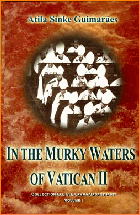 Volume I |
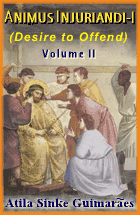 Volume II |
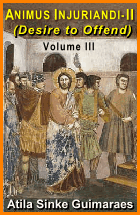 Volume III |
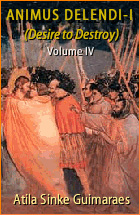 Volume IV |
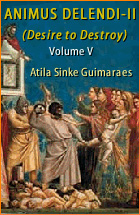 Volume V |
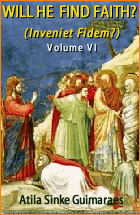 Volume VI |
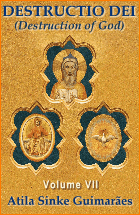 Volume VII |
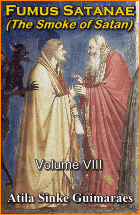 Volume VIII |
 Volume IX |
 Volume X |
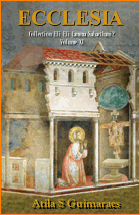 Volume XI |
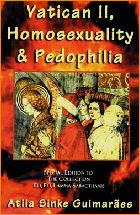 Special Edition |






